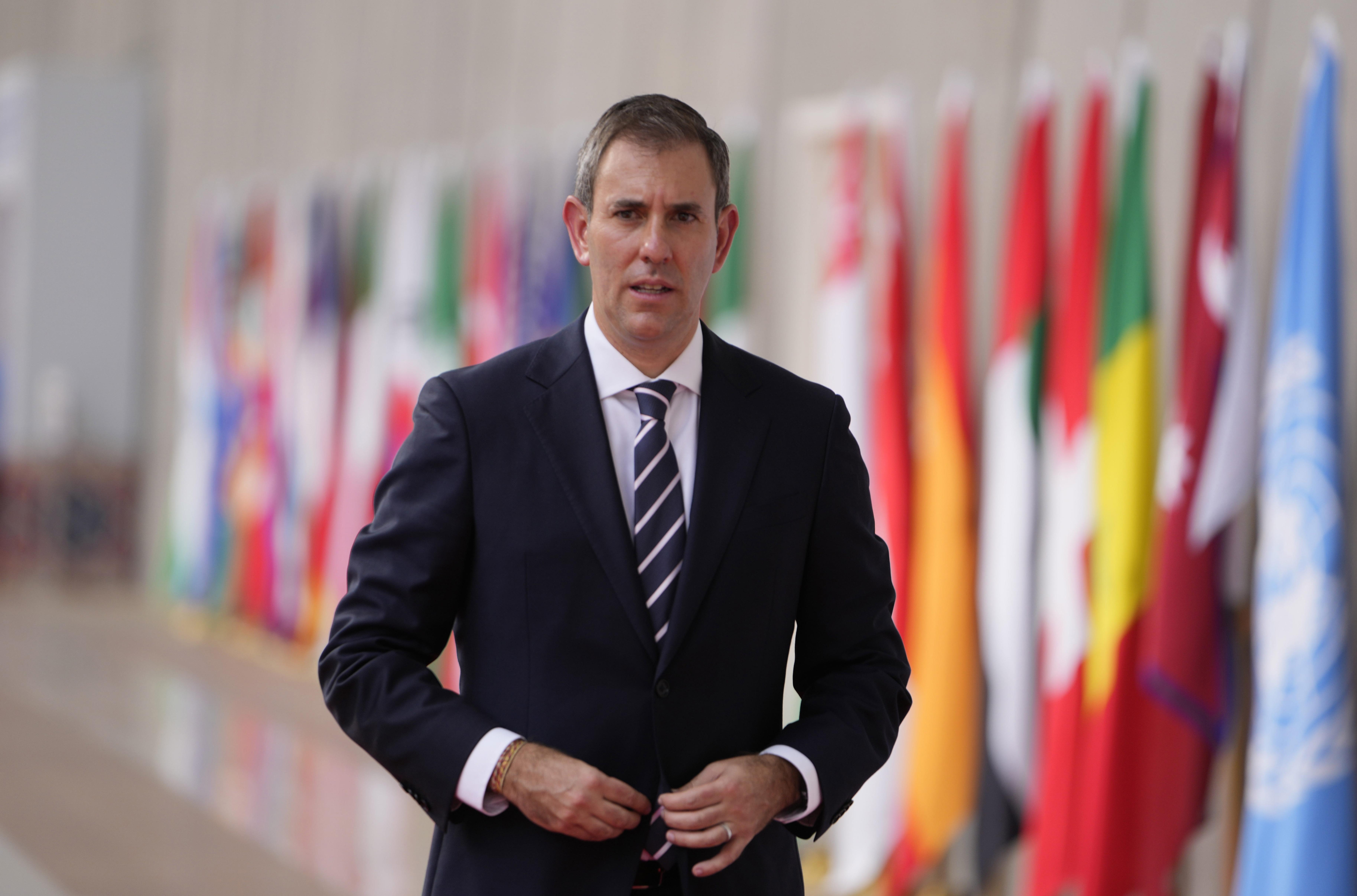 Australia's Labor Treasurer Jim Chalmers stands for photographs during the G-20 third Finance Ministers and Central Bank Governors meeting in Gandhinagar, India, July 18, 2023. (PHOTO / AP)
Australia's Labor Treasurer Jim Chalmers stands for photographs during the G-20 third Finance Ministers and Central Bank Governors meeting in Gandhinagar, India, July 18, 2023. (PHOTO / AP)
SYDNEY - Australia's government expects a much improved budget bottom line this year as revenues outpace forecasts, but is resisting calls for more cost-of-living handouts to avoid inflaming inflationary pressures.
In his mid-year economic and fiscal outlook, Labor Treasurer Jim Chalmers projected a budget deficit of just A$1.1 billion ($721.4 million) in the year to end June 2024, down from A$13.9 billion forecasted back in May.
The Labor government recorded the first budget surplus in 15 years in 2022/23 as profits boomed in the country's huge mining sector and employment proved much stronger than expected.
The Reserve Bank of Australia (RBA) has had to lift interest rates to a 12-year high of 4.35 percent to try and curb inflation which ran at 5.4 percent in the third quarter, far above the central bank's target band of 2-3 percent
Analysts suspect there could end up being another surplus this year given the government is assuming prices for iron ore, Australia's biggest export earner, will fall to $60 a tonne. That is considered unlikely given the steel making material is currently above $130 a tonne.
ALSO READ: Australia plans to halve migrant intake, tighten student visa rules
"By restraining spending and returning most of the tax upgrades to the budget, the Government continues to ensure fiscal and monetary policy settings are aligned, and helps ease inflationary pressures," the MYEFO showed.
The Reserve Bank of Australia (RBA) has had to lift interest rates to a 12-year high of 4.35 percent to try and curb inflation which ran at 5.4 percent in the third quarter, far above the central bank's target band of 2-3 percent.
Chalmers in May announced A$23 billion in targeted cost-of-living relief, but has since resisted pressure for more spending citing the need to control inflation.
The government sees consumer price inflation slowing to 3.75 percent by the middle of next year, and to 2.75 percent by mid-2025 which would put it back in the RBA's target band.
This is more optimistic than the central bank, which expects inflation to slow to 3.3 percent by mid-2025 and only re-enter the band at the very end of the year.
ALSO READ: Cyclone to bring heavy rain for Australia's northeast
The MYEFO projects economic growth to slow to 1.75 percent this fiscal year, before picking up to 2.25 percent the year after. Unemployment, which hit five-decade lows last year at 3.4 percent, is seen rising to 4.25 percen this year and peaking at 4.5 percent.
"We know people are struggling and our economy is slowing, which is why we are rolling out assistance while getting the Budget in much better shape," Chalmers said in a statement. "We are making welcome and encouraging progress in the fight against inflation."
The government has been suffering in opinion polls as a dearth of affordable housing and record-breaking migration has soured the mood of voters.
Net migration hit an all-time peak of 510,000 in 2022/23 and is projected to slow to 375,000 this year, though that is still 60,000 more than forecast back in May.
Earlier this week, the government announced it would tighten visa rules for international students and low-skilled workers that could halve its migrant intake over the next two years.


